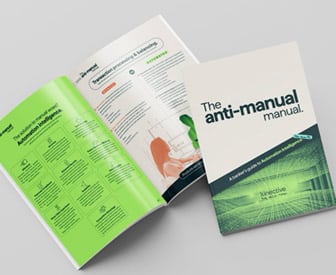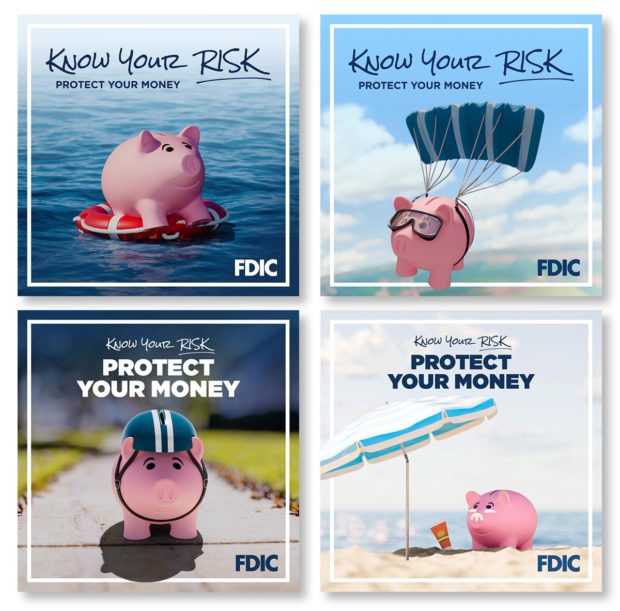The concept of “moral hazard” has been tossed around in banking for nearly a century. It goes back at least as far as the debate over the Depression-era legislation that created much of the federal safety net in the industry.
Federal deposit insurance — which is taken for granted today — is always in the crosshairs of those who claim it leads to moral hazard.
Economist Paul Krugman has written often on moral hazard, which he defines as “any situation in which one person makes the decision about how much risk to take, while someone else bears the cost if things go badly.”
In other words, gambling with someone else’s money.
Now a study has come along that flips this argument around. The claim is that the safety net actually results in less risky behavior.
It’s a “wait, what?” moment for the industry.
This contrarian viewpoint comes from a research paper by two sociologists, Kim Pernell, assistant professor of sociology at University of Texas at Austin, and Jiwook Jung, associate professor at the University of Illinois at Urbana-Champaign. They postulate that government protection reduces the “resource-based profitability pressures that can spur risky behavior.”
They refer to the usual argument about moral hazard as the “conventional wisdom” — which it is. Many would go so far as to classify it as gospel truth.
It’s perhaps serendipity that the new research comes to light just as the Federal Deposit Insurance Corp. is launching a marketing campaign about deposit insurance, complete with graphics banks can use on social media, all featuring a piggy bank.

The New AI: A Banker’s Guide to Automation Intelligence
Manual tasks across channels is costly. And while AI is hot, there’s a simpler way to bring efficiency that many bankers have overlooked.
Read More about The New AI: A Banker’s Guide to Automation Intelligence

Creating A Community with CQRC’s Branch Redesign
Find out how SLD helped CQRC Bank to create the perfect harmony of financial services, local culture, and the human touch in their branch transformation.
Read More about Creating A Community with CQRC’s Branch Redesign
he Mainstream View of the Safety Net and Moral Hazard
The essential, classic argument about moral hazard is that by providing deposit insurance, creating a de facto “too big to fail” framework for the largest institutions, and otherwise protecting the banking system in ways rarely enjoyed by other industries, the federal government essentially encourages risky behavior — or, at least, riskier than an industry subject to market constraints would engage in.
The argument is that, with such backstops in place, there is no “market discipline” keeping bankers from gambling. Depositors who think they are unconditionally safe don’t object to the risk-taking, so this behavior can persist and get out of control, the logic holds.
Moral Hazard Is a Policy Perennial:
In the aftermath of various financial crises since the 1980s, reducing moral hazard has been an underlying goal of legislation, regulation and policy development. It continues to be a key topic in those discussions today.
Now there’s a viewpoint suggesting that’s all wrong. No banker or credit union executive can dismiss such research as arcane or outside of their concerns. Deposit insurance played a big part in how the spring banking crisis played out. The “too big to fail” part of the safety net is an emotion-packed issue both inside and outside the industry and a political lightning rod.
These days you never know what will get legs.
In a New York Times op-ed about the resolution of Silicon Valley Bank, Krugman, the economist, wrote: “It’s not news that guaranteeing depositors creates moral hazard. That moral hazard is one of the reasons banks are regulated.”
He noted that capital requirements, for example, are a way to give bank owners “skin in the game, an incentive to avoid risking depositors’ funds, since they will have to bear many of the losses, via their capital, if they lose money.”
Deposit insurance is so important today that at the height of the industry turmoil in March many banks were promoting private programs that help depositors put very large amounts under Federal Deposit Insurance Corp. coverage.
Read more: Let’s Talk About the B-Word: An Industry Response to ‘Bailouts’
BTW, Deposit Insurance Wasn’t on FDR’s Shopping List
Proposals for deposit insurance were not universally embraced in the 1930s, as Irvine Sprague recounted his 1986 book, “Bailout: An Insider’s Account of Bank Failures and Rescues.” Sprague served twice on the FDIC board and was chairman from 1979-1981.
“The deposit insurance legislation was not initiated by President Franklin Roosevelt who, in fact, opposed it,” Sprague wrote. “He and others were concerned that bank insurance would undermine market discipline and serve as an invitation to banks to speculate freely.”
And here’s a surprise for many of today’s financial executives from Sprague’s book: “The most strenuous opposition came from the American Bankers Association, which feared federal intrusion into the banking business.”

FDIC has launched a national consumer campaign, on the 90th anniversary of the agency, to increase the public’s awareness of deposit insurance and how it can protect their money in the event of a bank’s failure.
Back then, the FDIC covered up to $2,500 and was intended to protect small depositors. Now, of course, federal deposit insurance covers 10 times that amount, and special private programs expand that many times over again.
But even so, federal regulators often opt to protect all depositors, as happened with the Silicon Valley and Signature bank failures in March. It’s always controversial to do so, but even more drama than usual ensued in the spring, when community bankers took issue with remarks from Treasury Secretary Janet Yellen. She had suggested small banks would not warrant such a move, a comment she later walked back, albeit only marginally so.
Others took issue with the FDIC action altogether, not the question about what size banks could trigger such special treatment of depositors.
“The bigger question is whether, by saving big depositors from their own fecklessness, policymakers have encouraged future bad behavior.”
— Paul Krugman, economist, in his New York Times op-ed
In a Wall Street Journal commentary, “A Proven Way to Avoid Moral Hazard” in March, William Isaac, FDIC chairman from 1981 to 1985, wrote: “If the government protects every depositor in a bank failure, even those who are rich and sophisticated enough to have known better, it erodes marketplace discipline and makes banks less stable going forward.”
Pause for reflection: It’s fascinating that this debate is over federal deposit insurance — which many in the banking industry had opposed from the start.
Read more about the aftermath of the spring banking troubles:
- NYCB’s Strategy Shift Gets Big Boost from Signature Deal
- Other ‘Signature’ and ‘Republic’ Banks Tackle Marketing Crisis
- Flagstar Bank’s New Logo Is Just One Step in ‘Lifestyle Brand’ Makeover

The New Contrarian View on Moral Hazard in Banking
So, moral hazard seems cemented in. Now comes the chisel.
“We suggest that moral hazard arguments about excessive organizational risk-taking have been both overused and not used carefully enough,” authors Pernell and Jung write. “This has come with important implications for how we think about and talk about regulation.”
Their research paper begins by pointing out that much of the conventional view has been developed and espoused by financial economists. As economic sociologists, they say, they are bringing a different analytical perspective to the issue.
“The moral hazard perspective implies that regulation and markets are substitutes: The more the government tries to protect the public from the costs of organizational failures, the less likely market actors become to restrain potentially dangerous organizational behavior,” the paper says.
The authors maintain that their focus on institutional resources indicates that the relationship between market discipline and regulation is more nuanced. (One could argue that the turmoil of March demonstrated that — though without much nuance.)
They acknowledge that “exposure to government protection could dampen the intensity of the market discipline organizations face.” However, they suggest, “this is not its only possible effect, nor necessarily its most important effect.”
Pernell and Jung apply “institutional resource” theory to make their case. To put this idea succinctly, top management is under pressure to produce profits and doing so requires resources. The nut of their argument is that providing government protection in the form of deposit insurance gives banks a special ability to raise deposits, an essential fuel for the business, thus removing some of the pressure that would otherwise drive risky behavior.
The safety net means that “protected organizations tend to experience lower resource costs and greater resource stability.” Thus, the protection reduces risk-taking or, at most, has a neutral effect on banks’ behavior, they argue.
The researchers come at the debate from the view that factors like performance bonuses for top management and other employees have more of an impact on risk-taking than does government protection. The long-running sales scandals at Wells Fargo leap immediately to mind as an example of such factors contributing to things running amuck.
Their point about banks having “lower resource costs and greater resource stability” also rings true in that this is one reason some fintechs have sought to either become banks or ultimately ended up selling to them.
Read more: Why Silence Isn’t Golden About Bank Failures

Navigating Credit Card Issuing in an Uncertain Economic Environment
Build a modern credit card strategy that balances profitability and risk, adopts the latest technology and delivers the customization that cardholders demand.
Read More about Navigating Credit Card Issuing in an Uncertain Economic Environment

The unfair advantage for financial brands.
Offering aggressive financial marketing strategies custom-built for leaders looking to redefine industry norms and establish market dominance.
A Detailed Analysis of Factors Like Nonperforming Loans
The researchers’ paper presents a detailed statistical analysis that is beyond the space we have here. It delves into examinations of the impact, or lack thereof, on nonperforming loan levels, financial leverage and capital ratios. The paper also makes the point that differing risk cultures also play a part in how individual banks behave.
The analysis based on nonperforming loans shows a relationship between insured deposits and risk-taking, but the researchers suggest that another cause may be a play.
The statistics they used in the analysis include the period during and after the Great Recession. They reason that community banks rely decisively on insured deposits and often concentrate in small business lending, a segment that got slammed by the Great Recession.
“This may explain why nonperforming loans increased at a faster rate for banks with increased dependence on insured deposits,” the paper states.

How Do Brokered Deposits Relate to Risk-Taking?
One timely and important exception Pernell and Jung make to their core theory concerns brokered deposits. This is timely because banks are making more use of brokered certificates of deposits at the end of a long run where deposits were so easy and cheap that many began to take them for granted.
The viewpoint they take of brokered CDs is interesting. Some commentators have expressed concern about the risk of taking on the higher cost of wholesale funding such as brokered CDs. The authors see risk as well, but from a different vantage point.
Their research found that “heavier bank dependence on expensive and volatile brokered deposits was consistently linked to expanded risk-taking.”
Muddying the waters are programs that multiply deposit insurance by spreading large deposits among multiple institutions. This practice can create brokered CDs that are completely insured.
The implication is that heavier use of brokered CDs, which typically benefit less from government protection, goes hand in hand with increased risk-taking. But this results from growth pressures and not because of the federal protection.
“Expanded reliance on brokered deposits was associated with significantly greater risk-taking,” the paper states, “via higher leverage, lower regulatory capital, and greater risky lending.”
Read more: What Bankers Should Know About the Alarm Over Brokered Deposits







